El Salvador – Ruta las Flores
On the Gringo Tours website there was detailed information about several of their tours, but there was one link to what seemed to be an unfinished page about a Food Lovers Tour, which piqued my interest. When we were taking the pupusa cooking class in Suchitoto with our Gringo Tours friends Robert and Tita, I asked whether they actually had this tour. “Well…we’re developing one,” was Robert’s hesitant answer while looking at Tita. Basically he had an idea for a tour to Tita’s hometown in western El Salvador, which has a night market where they still make several foods that originated in Mayan times, many of which you can’t find outside that area of the country. That sounded awesome! I can be persuasive, and acknowledge I don’t tend to give up when I really want something (not a bad thing for an attorney, I say, but somewhat annoying in a spouse at times, I’m told). Well, several whatsapps between Robert and me later, we were his first clients on a brand new 2-day food-focused tour in western El Salvador along the Ruta las Flores, incorporating some of El Salvador’s most impressive volcanos as well. Tita even came along, which was awesome as she doesn’t normally go on Robert’s tours.
March is toward the end of the sugarcane harvest in El Salvador, and before harvesting, the farmers do a quick burn on the sugarcane plants to get rid of the outer layers, which makes them easier to harvest. As a result, the air had been varying degrees of hazy on most days we’d been in the country. But on the two days we did our food tour, it was crystal clear – the views of all the surrounding volcanoes were spectacular.
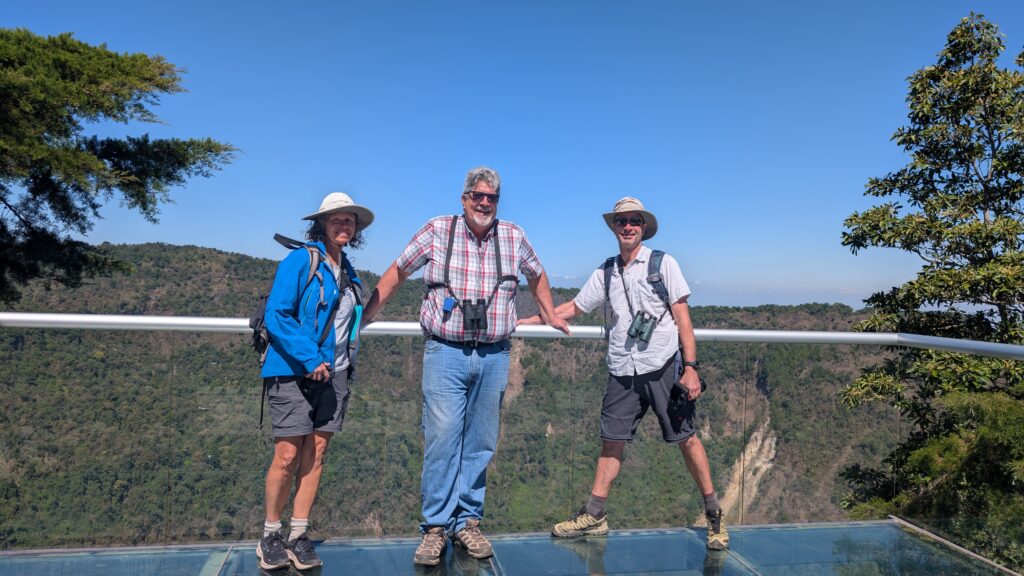
Us with Robert overlooking the crater on Volcan Boqueron. Peter didn’t trust the glass floor.
We started Friday morning and drove up the Boqueron volcano to a park at the top, where we had nice views into the crater. The park was very nice, tons of flowers planted along with good signage and wide paths. You can hike all the way around the crater rim, or down into the crater, but you’re completely exposed to the sun the entire time, so we decided we’d settle for looking at it. Next we were off to the highlands village of Ataco, which is along the Ruta las Flores. The Ruta las Flores (the flower route) is coffee country, but it got its name due to the coffee plantation owners many years ago growing various plants and setting up nurseries along this route where locals could buy the plants. We didn’t see many nurseries on our trip, but saw lots of coffee fields, and as an aside, drank some truly excellent coffee (it helped that Robert had an agricultural degree and had advised many coffee farms years ago, so has expert-level knowledge of coffee and where to get the best).

The walls of every building in Ataco were covered in murals.
Ataco is known as the most beautiful village in El Salvador, and it was beautiful – colorful buildings, cobbled streets, with great views of the surrounding volcanos. Our first food stop was at a nice restaurant, El Jardin de Celeste, where we had delicious local food, including a sauce over my chicken that was made with tenquique mushrooms, which Tita said grow on coffee plants. They were fantastic, definitely a rich, “true” mushroom flavor, I’d say similar to porcini. The mushrooms are sold at markets when available, and although we kept looking for them, we didn’t find any. I found one site online that said it was pseudofistulina brasiliensis. Mushroomers: keep an eye out next time you’re in coffee country!
After Ataco, we checked into our quaint, family-owned hotel in Juayua and soon after left for Nahuizalco, the location of the night market. As we were there during Lent, we got to watch a small Via Cruces (way of the cross) procession in the village that started and ended at the church, many people dressed in purple, the liturgical color of Lent. I was raised Catholic, and it was interesting to see how Lent is celebrated in Latin America. “It’s different,” we might say in my home state of Minnesota.
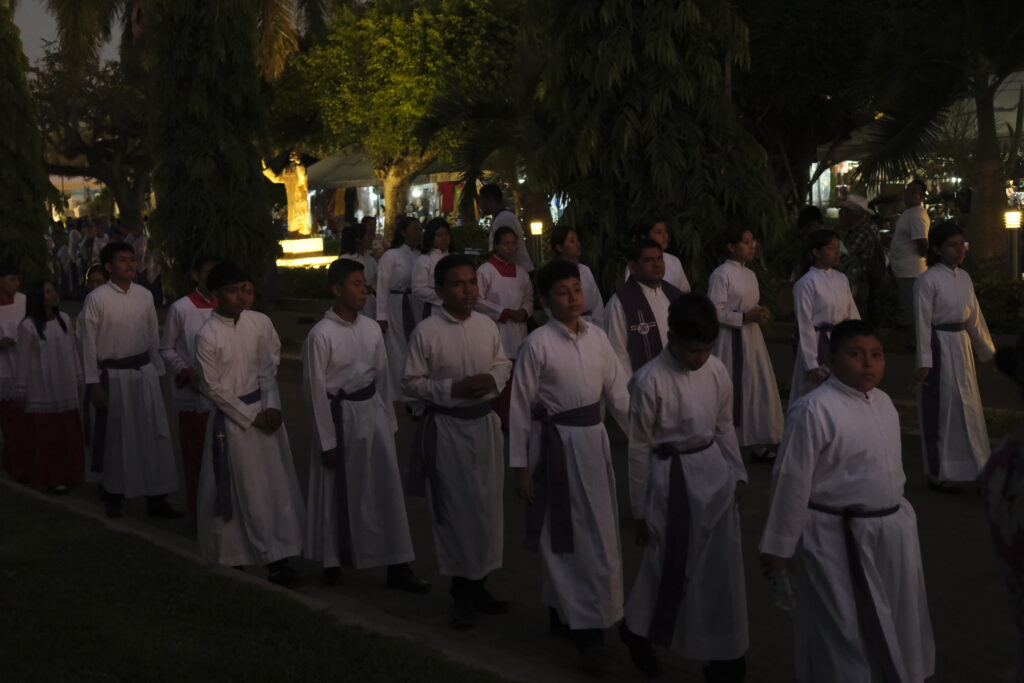
Part of the procession from the church.
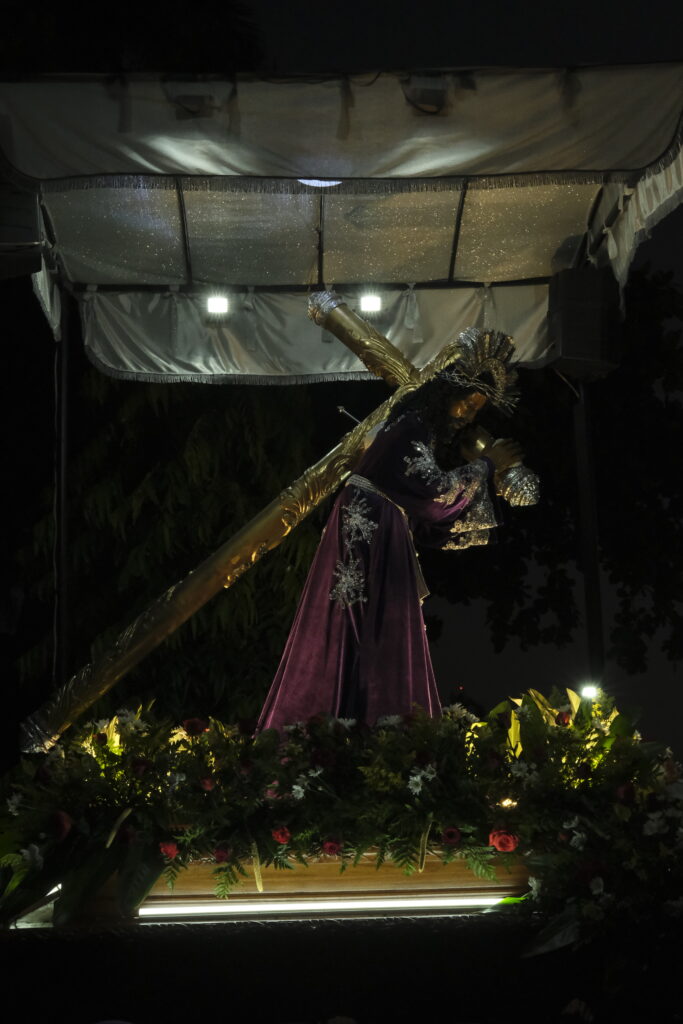
People carry these big statues on platforms.
When the night market was in full swing, we sampled several foods that dated back to the Mayan Pipil culture. Most incorporated corn to one extent or another (some fresh mashed and sweet, others savory like tamale masa), some were based on potatoes, some had chicken, various local greens, some came with sauce. They were all very good and so interesting to try, along with a few more pupusas.
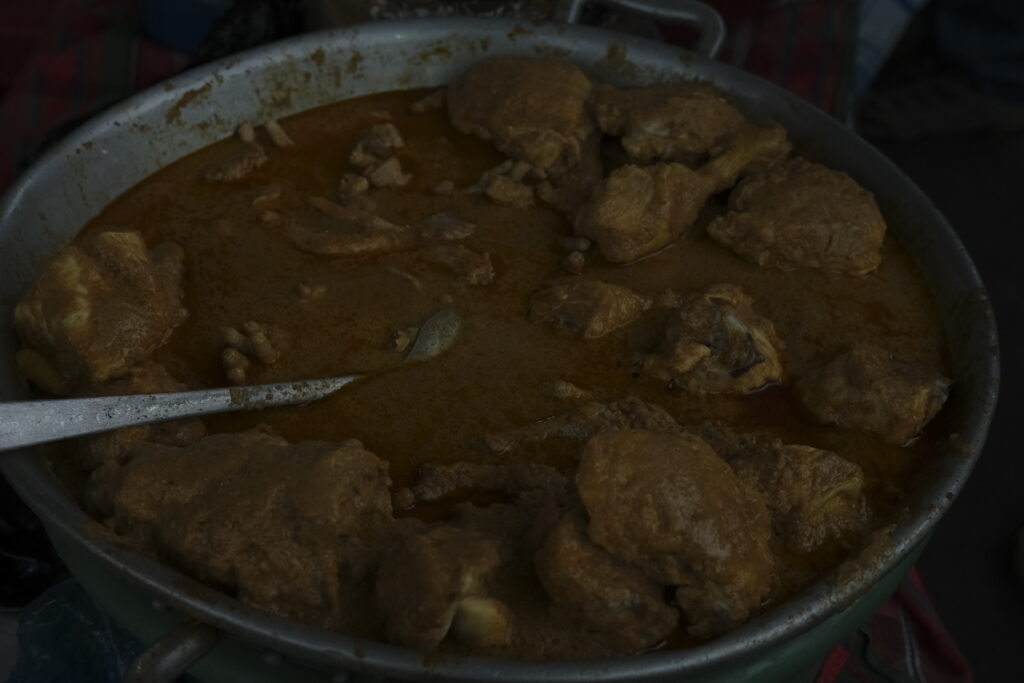
Chicken with a sauce that dates back to Mayan times.
The next day we checked out Juayua, where we started with a large local breakfast that cost less than $2, and also the village of Apaneca, seeing the work of local painters, weavers, potters and other artisans. I can see spending more time in this area. The weather was perfect (in the 70s during the day, cooler at night) and there are several good hikes in the area, which we didn’t have time to do. We ended our very satisfying tour at Cerro Verde, near the top of a volcano with views all the way to the Pacific.
On other weekends while in El Salvador, we visited three small-ish Mayan ruins and did a rum tour, complete with tastings and the mixing of a passion fruit cocktail at the end. One Mayan ruin, Joya de Ceren, stood out from others we’ve seen, and it’s labeled the “Pompeii of the Americas” due to being buried in at least 20 feet of ash around 600 A.D. Smaller, but it is the only ruin known where you can see how the villagers lived, which was very interesting.
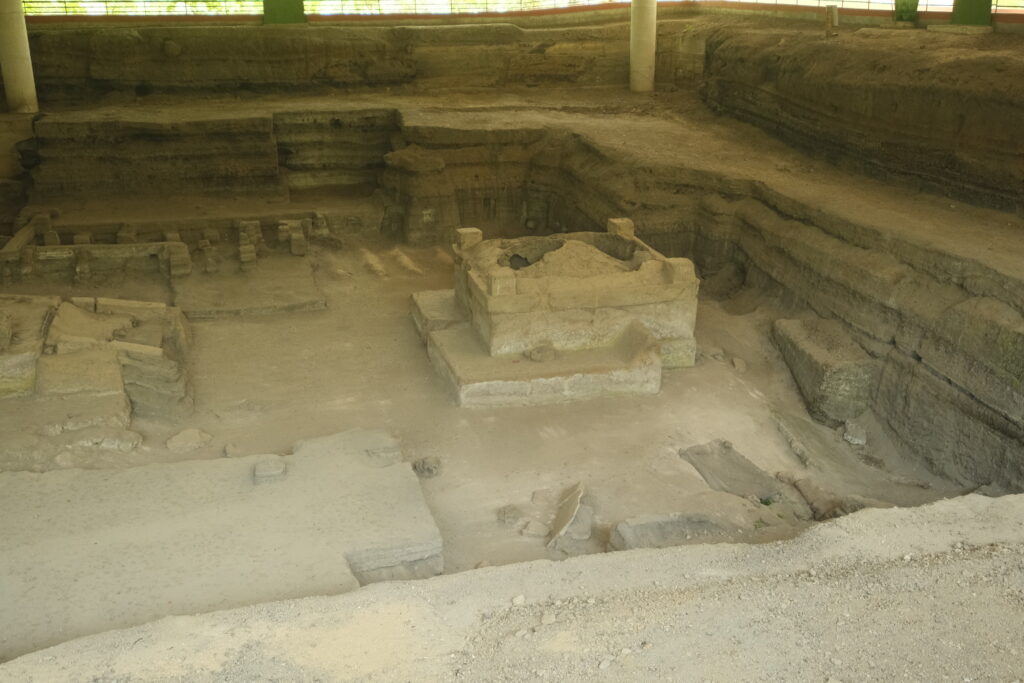
Joya de Ceren, this is the remains of a house and the raised rows behind/left of the house are crop rows.
We found that El Salvador has a lot to offer and is small enough that we could see most things on weekends while using San Salvador as a home base. Here, we discovered a somewhat rare opportunity to visit a country where the tourism infrastructure is in place, but there are not many tourists, and those who were here tended to be from Central America. So it feels very authentic without being difficult or kinda boring. We enjoy indigenous cultures and that is one thing El Salvador lacks compared to, say, Guatemala or Panama, because most were wiped out by the Spanish. If we were to return, we’d probably look to base ourselves out of Santa Ana or somewhere other than San Salvador, only because it wasn’t a super interesting city, if well stocked with good restaurants and grocery stores.
Categories: Uncategorized
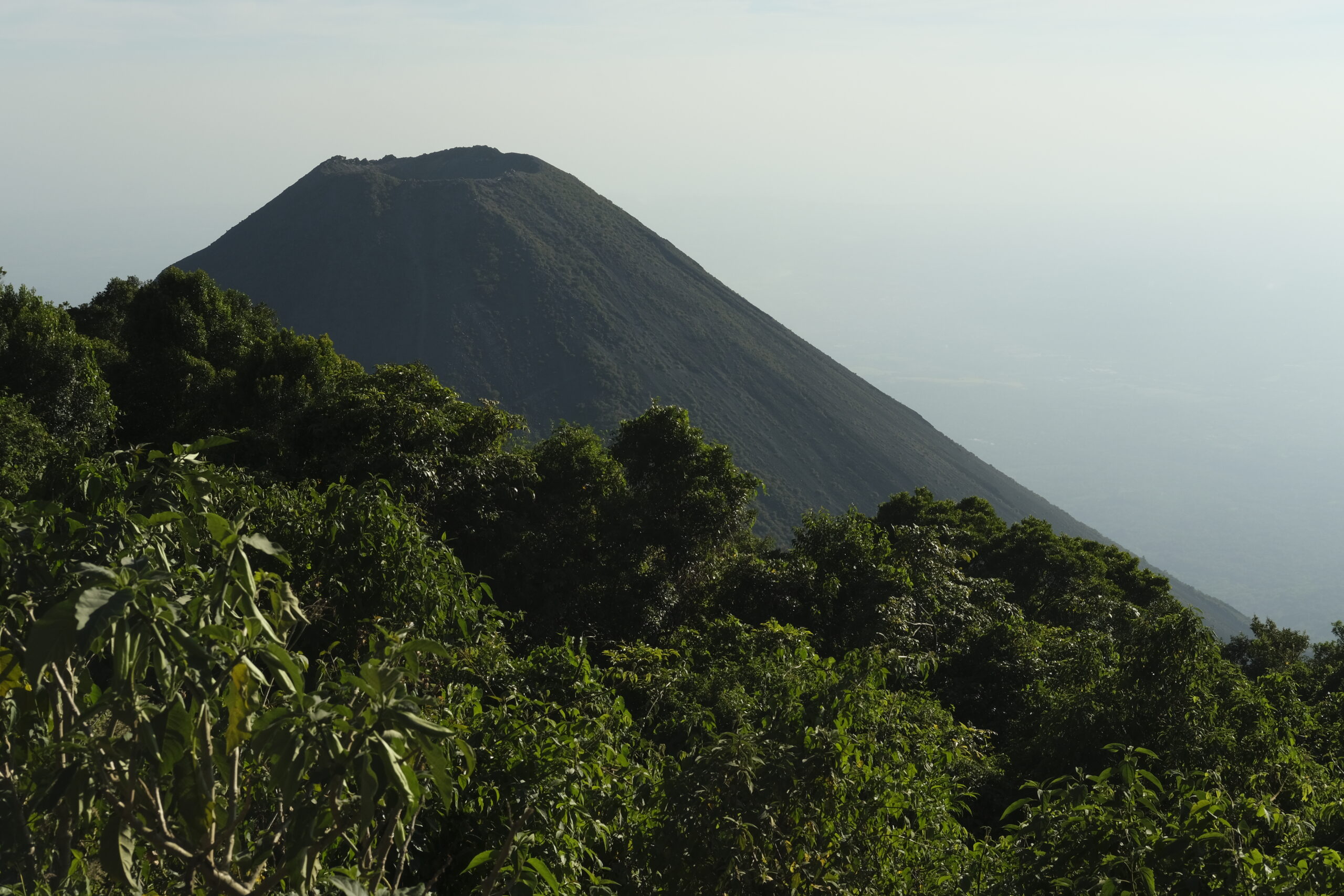
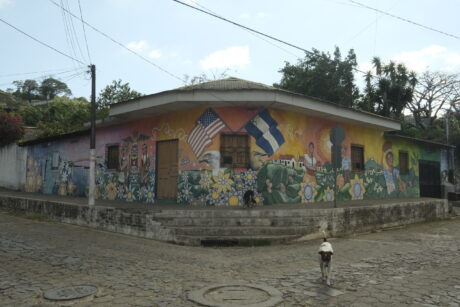
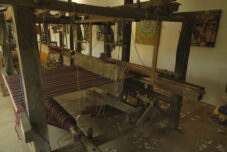
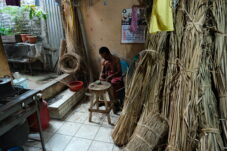
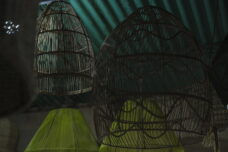
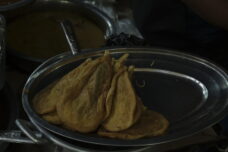
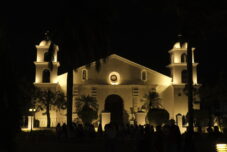
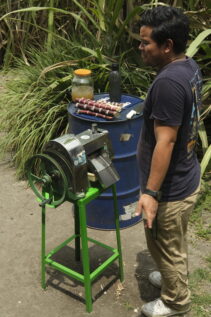
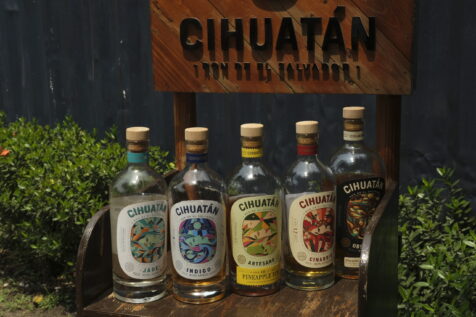
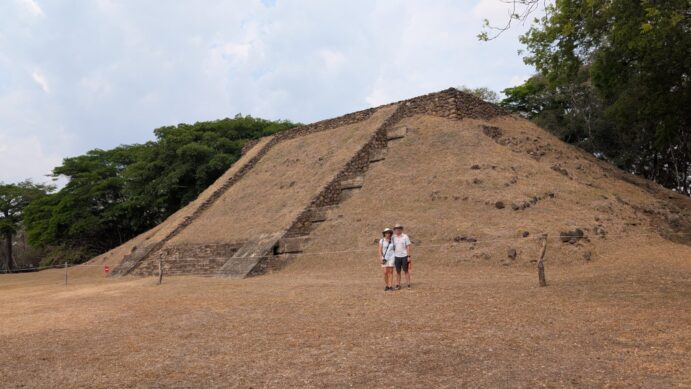
Getting vicarious pleasure here.Would prefer the real thing but for now, this is working. I find this whole trip, and the last one too, to be very bold. In fact, I’m in admiration of the boldness here. You must have passable Spanish. Doing what you are doing w/o passable Spanish would just seem too darn hard. How long will you be there?
We are certainly not fluent, but yes, we both speak enough Spanish to get by. As you say, it would be pretty exhausting otherwise — as helpful as Google Translate is, it would be miserable to have to use it all the time. We fly back to Seattle on May 18, so we will have been gone 6 months! Already thinking about where to go on next winter’s escape 🙂